Roland Jupiter-6. Cult status? Nope! Sales success? So-so. Since its release in 1983, the Jupiter-6 has been traded as a niche product between the Juno-60 and the Jupiter-8. So … is this a “neither fish nor fowl” synthesizer? Not at all. The Jupiter-6 is – despite its still mixed popularity – a great instrument, surprising in technical detail and refreshing in tonal detail.
Since no particularly close relationship has developed with the Jupiter-6 over decades, our assessment of this synthesizer would have been a much less enthusiastic as recently as 2022. But just a few weeks ago, at the early planning stages of selling the instrument, we rediscovered the Jupiter-6. What an instrument!
The Jupiters’ triumphant march begins in February 2023 due to a very practical reason: The challenge to replace those many experimental, noisy sounds of our Jupiter 6 – heritage of a previous owner – with our own sounds. This reprogramming succeeds much better than expected and exceeds all expectations and immediately leads to the decision not to sell the instrument.
The personal triumph of our Jupiter-6 is accompanied by lasting impressions of current modern poly analogue synthesizers. Powerful instruments, full to the brim with possibilities … no question about that. And yet for years we have been missing something that triggers. Perhaps something that could be called “musical inspiration”.
Considering the already almost “standardised” modern analogue sound, even a Jupiter-6 – never a representative of the particularly organic / warm / exceedingly impressive sounding species of “vintage poly synthesizer” – sounds surprisingly great. Full of character, pleasantly refreshing, unexpectedly versatile, and even “modern”.
Classic voice architecture
The Jupiter-6 has per voice:
- 2 VCOs with sync functio and noise
- 1 multimode VCF (LP/BP/HP)
- 2 envelopes (ADSR)
- 1 VCA
Further:
- Portamento / glissando
- 1 main LFO (LFO-1), with Sample/Hold; 0,04 – 100 Hz (!)
- 1 performance LFO (LFO-2), for vibrato / wahwah; 1 – 10 Hz
- An arpeggiator (UP, DOWN, UP/DOWN and DOWN/UP)
- Solo, Unison, Poly-1 and Poly-2 key modes
- WHOLE and SPLIT mode (2 split variations)
- Pitchbender with WIDE function
Connections:
- Audio out (balanced / unbalanced)
- MIDI (IN / OUT, later models also feature MIDI THRU)
- Diverse CV- and pedal-inputs
- Cassette interface
Memories:
- 48 SINGLE sound memories
- 32 PATCH memories (WHOLE or SPLIT),
including various performance control functions
Let’s go straight to the special features of the Jupiter-6. Let’s start with the performance section …
Freestyle-Arpeggio: “Performing” sound building blocks
At first glance it may seem disappointing: The Jupiter-6 arpeggiator offers UP, DOWN and the combination of both directions, but no random. However, this is only a loss until you realise that the order of the pressed notes in the arpeggio is immediately taken into account and implemented in real time. So you make your own random, ad hoc – all the better.
In concrete terms, it is a good idea to actually “perform” the keyboard of the Jupiter-6 when the arpeggiator is active – to play scales, solos or scales up and down, with and without the left hand. The rhythmically running arpeggiator immediately converted what was played into varied sound components. This “freestyle arpeggio” sounds wonderful and guarantees hours of happiness.
LFO-2: Fading polyrhythms in and out
The pitch-bend and LFO-2 department is an essential part of the freestyle-arpeggio performing. While playing the arpeggiator up and down the keyboard, vibrati, wah-wah effects and note bendings can still be added *. Which means that the left hand, responsible for arpeggio bass tones of your freestyle performance, has to prove some flexibility. However, it’s those extra extras that turn the Jupiter-6 arpeggiator …
… into a fabulous musical tool. Since the speeds of arpeggiator and LFO are never identical, a wide variety of accentuations and thus sound shifts or polyrhythmic structures occur when pressing the LFO trigger button while running the arpeggiator. Just make sure you turned up either the VCO or the VCF knob in order to activate the desired modulation path.
[ * With a frequency range of 1 to 10 Hz, LFO-2 is too fast for any sort of slow vibrato. Anyhow, the 2nd Low Frequeny Oscillator is still very useful … ]
Extended studio performance: External CV and trigger sources
If you want to go further, you can adapt the freestyling of the rhythmic sound building blocks to the analogue (and digital) studio environment. Eurorack modules, MIDI-to-CV/Gate interfaces, whatever. Drum computer and Jupiter-6 arpeggiator as well as step sequencer and Jupiter-6 VCF/VCA modulations – everything goes in sync (or can be specifically shifted).
In addition to the ARPEGGIO CLOCK IN mentioned above, even PATCH SHIFT can – theoretically – be used to obtain a simple form of wave sequencing by rhythmically switching sounds. Originally intended for simpler purposes, nothing stands in the way of such PATCH SHIFT experiments. It’s up to your own imagination how far you go.
Dual Arpeggiator: The “Super Juno-60”?
A significant part of the euphoria surrounding the Jupiter-6 comes at the very moment when the musician switches from WHOLE to SPLIT mode. Here, if desired, two arpeggiators are available simultaneously. So (as an example) you set an arpeggio at LOWER, press HOLD, switch to the UPPER sound and indulge in the freestyle arpeggio “to” the already running arpeggio.
It is precisely at this interface that they can actually arise, the polyrhythms. If the LOWER arpeggio has a pattern with 4 tones, you can press 5 keys on the UPPER arpeggio and thus start the match “quartole against quintole”. In fact, only 2 tones sound “at the same time” anyway, so a lack of polyphony is not a big issue with regard to the arpeggiator(s).
From this point of view – dual arpeggiator in real time – the Jupiter-6 seems to us like a “Super Juno-60” (which in itself has a great sound and through the arpeggiator also a corresponding fun factor). The Jupiter-6’s plus is further enhanced by the significantly higher number of possible sound settings – which we will now discuss …
Rich Sounds: Flexible VCOs, MultiMode VCF and good ENV-Routings
Let’s start with the envelopes. They are two classic ADSR envelopes, one for VCF, one for VCA. Both have a KEY FOLLOW function, and ENV-1 may be set to either positive or negative. Both envelopes can be activated at different points of the Jupiter-6. For example: Take ENV-2 for both the amplifier and the filter, while ENV-1 remains free for OSC SYNC, PWM or FM modulation.
A short example of architectural flexibility: Use ENV-2 for VCA and VCF at the same time, decoupling ENV-1 from sound shaping and making it available independently or specifically in the oscillator section. Turn the envelope around (negative polarity) and use it, for example, for oscillator FM (VCO-1 or VCO-2 individually or together), PWM and CROSS MOD (envelope controls the “strength” of cross-modulation). Great.
The filter of the Jupiter-6 is – a rarity at Roland – designed as MultiMode VCF. It can work as a LowPass, BandPass or HighPass filter and can be modulated by ENV-1 (or ENV-2), LFO-1 (with Random), LFO-2, Key Follow (up to 120%), the Pitch Bender and an external signal (VCF CV IN). A bit special is the filter resonance (to be tweakened with respect). At high values, it can produce beautiful overtones, but at the same time can bring heavy feedbacks into the sound. Patience and sensitive programming are required.
Concerning the oscillators, there is a bit of a difference of opinion. A special feature of the Jupiter-6 is that the waveforms of VCO-1 / VCO-2 can be activated not only individually, but all together or in any combination at the same time. Interestingly, however, the signal level does not get proportionally louder as the number of waveforms increases, which somewhat diminishes the effectiveness of this feature.
In addition, the waveforms can only be switched off and on, but a stepless mix to set the “perfect” waveform (according to personal taste) is not possible. In addition, NOISE – if you listen closely – has a somewhat strange noise behavior. Here there are definitely synthesizers with “nicer” noise generators (the Jupiter-4, to name just one example). However, these aspects should be said only in passing, because the Jupiter-6 has very many positive extras to offer …
In UNISON(O) mode, the spread of the oscillators and thus the density of the sound can be controlled. Furthermore, oscillator SYNC is allowed in “both” directions (VCO-1 > VCO-2 or VCO-2 > VCO-1), which is an excellent feature considering the different features of the VCOs regarding waveforms and frequency possibilities. By the way, for live control of the sync effect by hand (or for manual creation of beats / intervals) VCO-1 and VCO-2 can be activated / deactivated separately in the pitch bend section. And finally, the modulation capabilities of both oscillators through CROSS MOD, LFO-1 and ENV-1 offer an additional wide field of design possibilities.
Even more impressive, however, is the instrument’s enormous frequency range. First, the VCOs come in at 32 feet, an octave lower than the Jupiter-8’s. Second, VCO-2 on the Jupiter-6 offers its own HIGH mode in addition to the LOW mode. And third, sounds can be sent directly into the sub-audio / hyper-audio range using the WIDE function of the pitch bender (+/- 3 octaves), which again is very effective in conjunction with SYNC. Especially the border areas of the audible are interesting fields of activity for sound experiments.
SOUND
All the technical details suggest that the sound – not surprisingly – can be very versatile. With appropriate programming and integration of the manifold performance offers, the Jupiter-6 presents itself as an almost all-rounder in the analogue field. More than that, it is an almost all-rounder in the analogue field that is also capable of sounding surprisingly modern (!).
The analogue character is particularly striking when not tuned. We usually leave the TUNE function untouched, because then the Jupiter 6 sounds offer a “feast of beats and phase cancellations”. In addition, the widely available audio frequencies and the exemplary long envelope times allow beautiful experiments in musical border areas.
Basically, the sound is of course “classic Roland”. Thick basses, sawtooth leads and PWM sound carpets are part of the Jupiter-6’s repertoire, but due to the multitude of special features, extras are added in all areas of application that go the decisive step “further” (than a Juno-60 or even a Jupiter-8).
In addition to the excellent-sounding bread-and-butter sounds of the analogue corner, mystical drones, experimental filter movements, strange cross-modulation structures, amazing audio borderline expeditions and many other details are added. Details that make the Jupiter-6 an excellent and above all comprehensive music tool.
All in all
Considering the exorbitant second-hand prices of a Jupiter-8, the somewhat smaller Jupiter-6 seems almost like a bargain. Between 5,000 and 8,000 Euros / USD are most of the (numerous) offers on Reverb and other websites. This puts the still somewhat unpopular Jupiter-6 almost on a par with the Jupiter-4, which has caught up enormously and has now achieved cult status.
But such number games are of little importance. Even the Synthcom EUROPA Upgrade or the new Tauntek Firmware Upgrade, both specially developed for the Jupiter-6, seem not that important to us – even if you get the MIDI CC option and MIDI Clock for the arpeggiator, which is, no doubt, a real gain. What is decisive is the flexible sound as well as the flexible performance. The symbiosis of both aspects makes the Jupiter-6 a special analogue poly synthesizer, which, however, many people have yet to discover.
Compared to the Juno-60, the Jupiter-6 sounds a little less “warm” and has – very surprisingly – also (minimally) less pressure. On the other hand, the Jupiter-6 has much more interesting sound possibilities (2 VCOs instead of 1 DCO per voice, Osc-Sync, Cross-Mod, 2 LFOs, longer envelope times, MultiMode VCF etc.) and offers SPLIT sounds and a dual arpeggiator.
Well, and compared to the Jupiter-8, the instrument’s sound is not as “bulky” or “full”. The Jupiter-6 goes a bit more in the direction of “electro” – which does have its own appeal. Compared to the Jupiter-8, you also have to accept the less elegant layout and the somewhat cheaper hardware, as well as the painful lack of a LAYER function and a stereo output. The latter is a real loss, because the mono output turns out to be perhaps the biggest weakness of the Jupiter-6. Separate tapping of the SPLIT sounds – often indispensable in recording – is not possible, not even via headphones. The signal remains mono.
Nevertheless, the many extras outweigh the majority of the negative points and put the Jupiter-6 in a league of its own. It’s a serious instrument, which – comparisons to other Roland classics notwithstanding – offers an enormous variety of sounds and can stand up to most modern synthesizers, especially to the somewhat uniform NEW MODERN ANALOG SOUND. These are big words, of course, since we succumbed to the charm of the Jupiter-6 not before early 2023. What triggers us today is its impressive, versatile sound and – perhaps even more important – its flexible performance possibilities. Both aspects make up for a stunning hands-on instrument, a real synthesizer in the truest sense of the word.
Finally, however, the Jupiter-6 convinces with some surprising and appealing technical details. At 16 kg, the instrument is relatively light and easy to carry around. Coming without a heat-sink, the beautiful (huge) Roland logo on the back presents itself in full glory. And in the dim light of the studio, the illuminated touch keys exude a solemn aura. Even the MIDI interface – despite its limited possibilities – contributes to the friendliness of the synthesizer.
In closing, it’s worth mentioning the instrument’s minimal power consumption. The Jupiter-6 requires a mere 30 Watts (!) *, which means that this synthesizer can be classified as relatively climate-friendly and thus a green-deal vintage instrument.
[ * Compared to the 90 Watts of a Jupiter-8, the 110 Watts of a Memorymoog, or to the 85 Watts of an Arturia PolyBrute … ]
x
50+ minutes of audio demos are attached. With the exception of the “Mix” files, it’s the Jupiter-6 only that can be heard. We also added “Xtra” sound files with two vintage Roland effects – the RV800 Spring Reverb and the PH830 Stereo Phaser.
Audio processing: single- and multitrack-recording in Audacity.
Roland Jupiter-6
Polyphonic Analog Synthesizer
SPLIT Mode and Dual Arpeggiator
6 Voices
MIDI
Link / Comparison:
Roland Jupiter-4 Review
Roland Jupiter-8 Review
Roland Juno-60 Review
Open / Download:
Roland Jupiter-6 Front View (4000 x 2400px)
Roland Jupiter-6 Back View (4000 x 2400px)
Youtube Videos:
Roland Jupiter-6 Demo (by rimela)
Jupiter-6: The Dystopian Synth (by Alex Ball)
Roland Jupiter-6 – background and interesting facts:
- It was – along with the JX-3P – the first Roland synthesizer with MIDI. The glorious “MIDI moment” occurred at the NAMM show in January 1983, when a Jupiter-6 and a Prophet-600 communicated via the new interface for the first time.
- For the first time, Roland introduced its PATCH preset system. The Jupiter-8 already had patch presets, but they only stored the combinations of two memories (plus the selected key modes). With the Jupiter-6, the memories were saved as PATCH presets together with (nearly) all performance settings – SPLIT 4-2 / SPLIT 2-4 or WHOLE, Pitch-Bend / LFO-2 On/Off, Portamento / Glissando, Arpeggiator, Unison and VCO-Spread. A clear step towards live performance! The PATCH system is still valid for Roland synthesizers today.
- SPLIT patches can be addressed on separate MIDI channels at full (!) keyboard range of 5 octaves. Thus, Jupiter-6 LAYER sounds can be created – albeit only externally. (Whether this is related to a certain MIDI version – later models? – is beyond our knowledge).

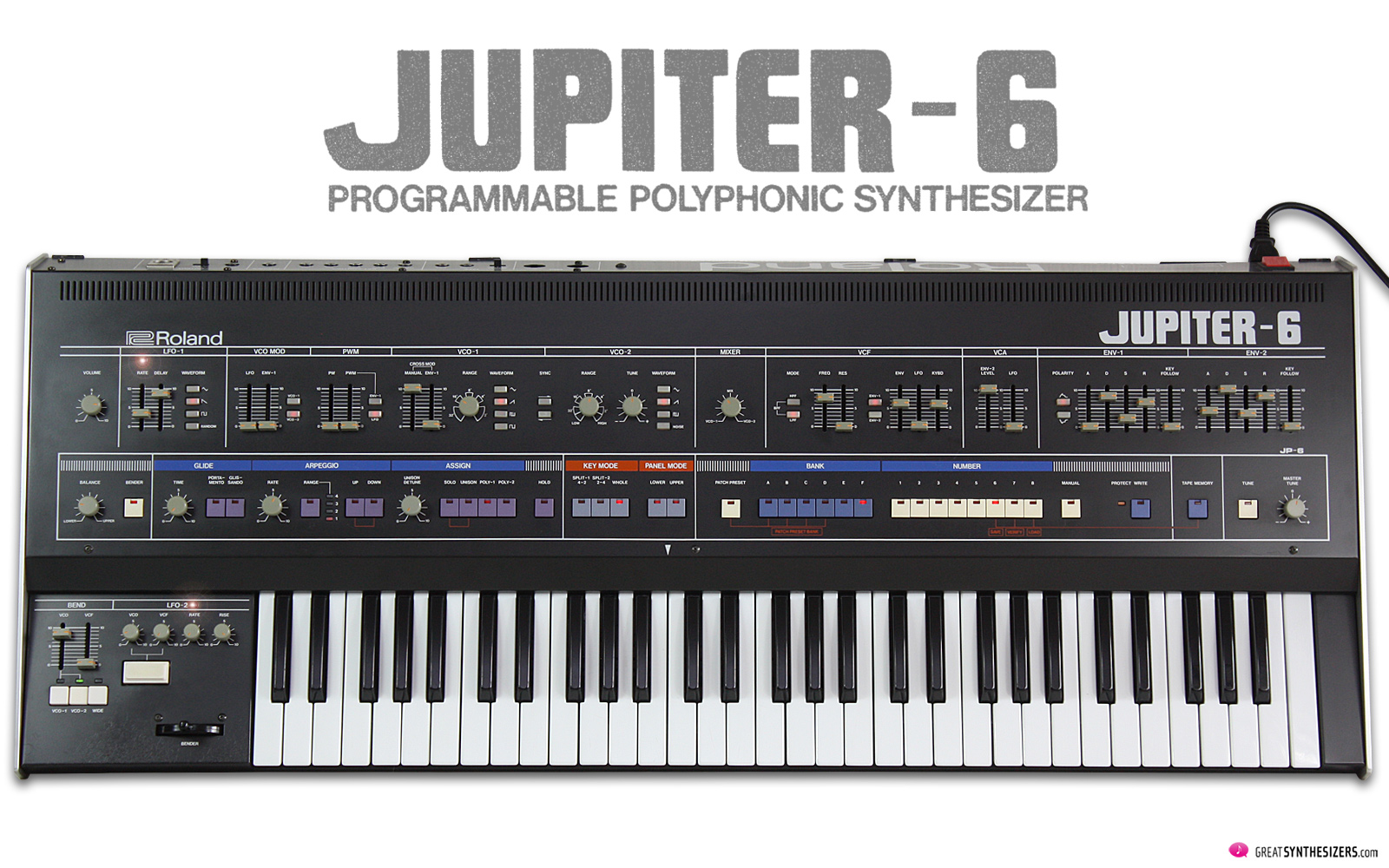
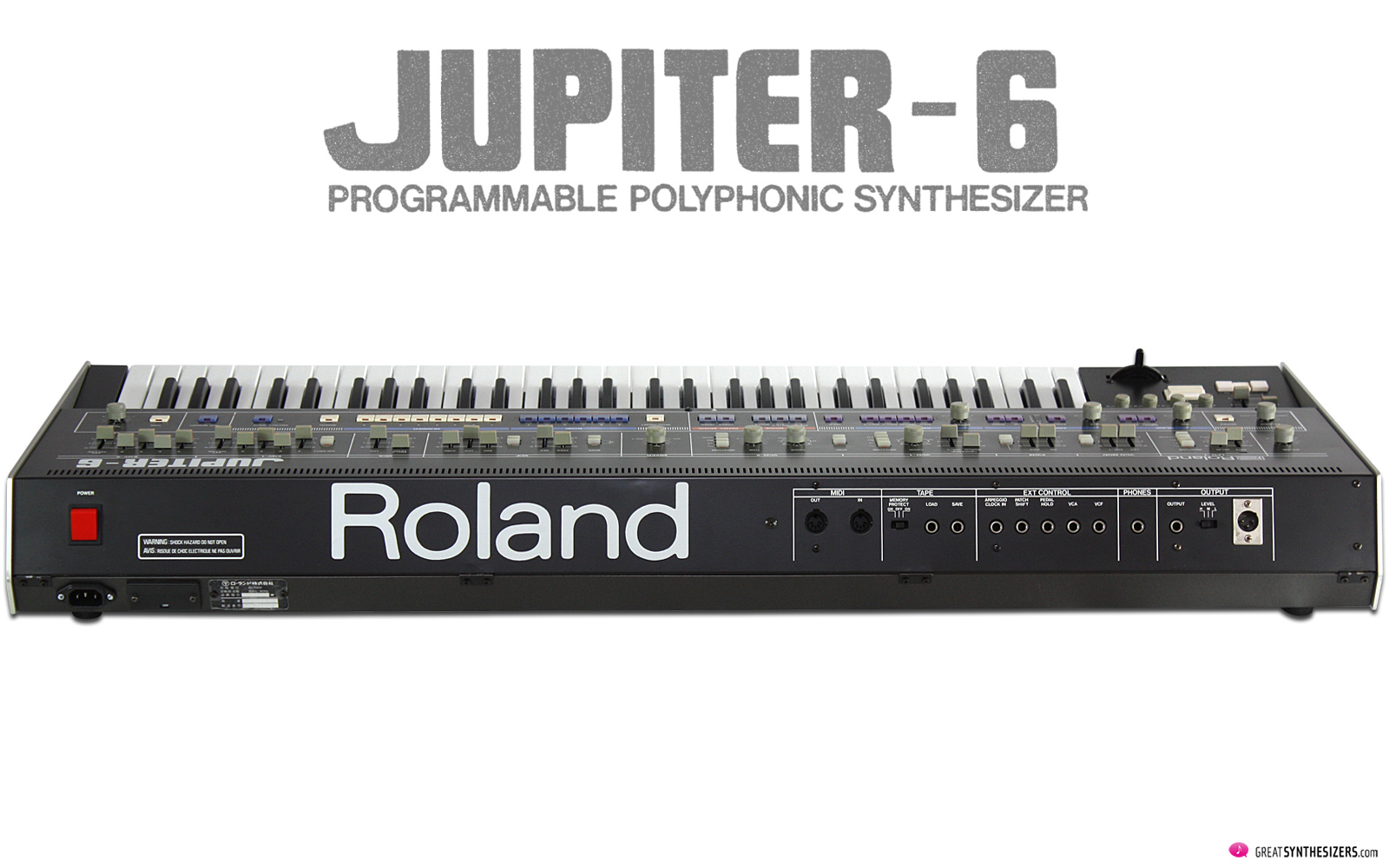
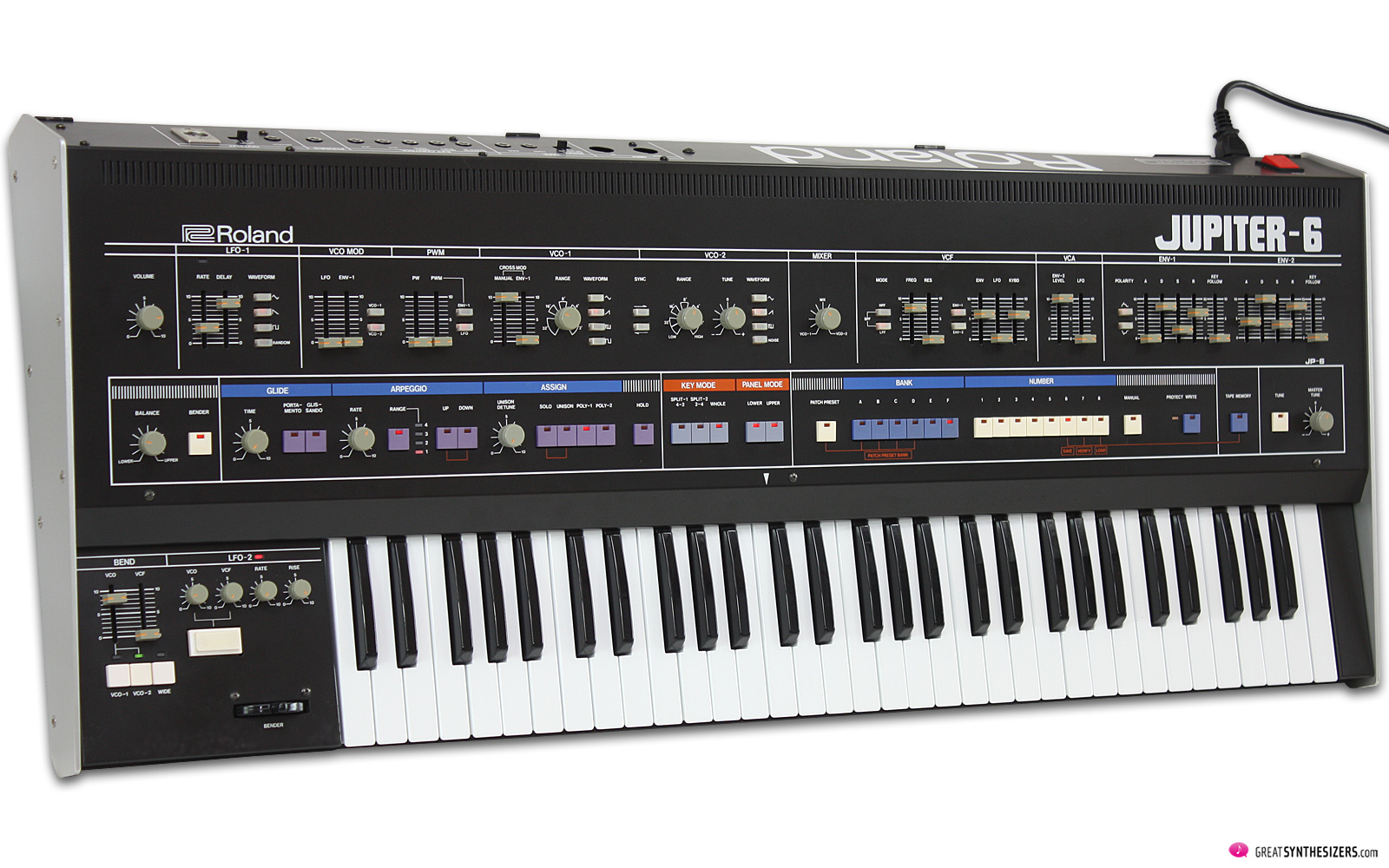
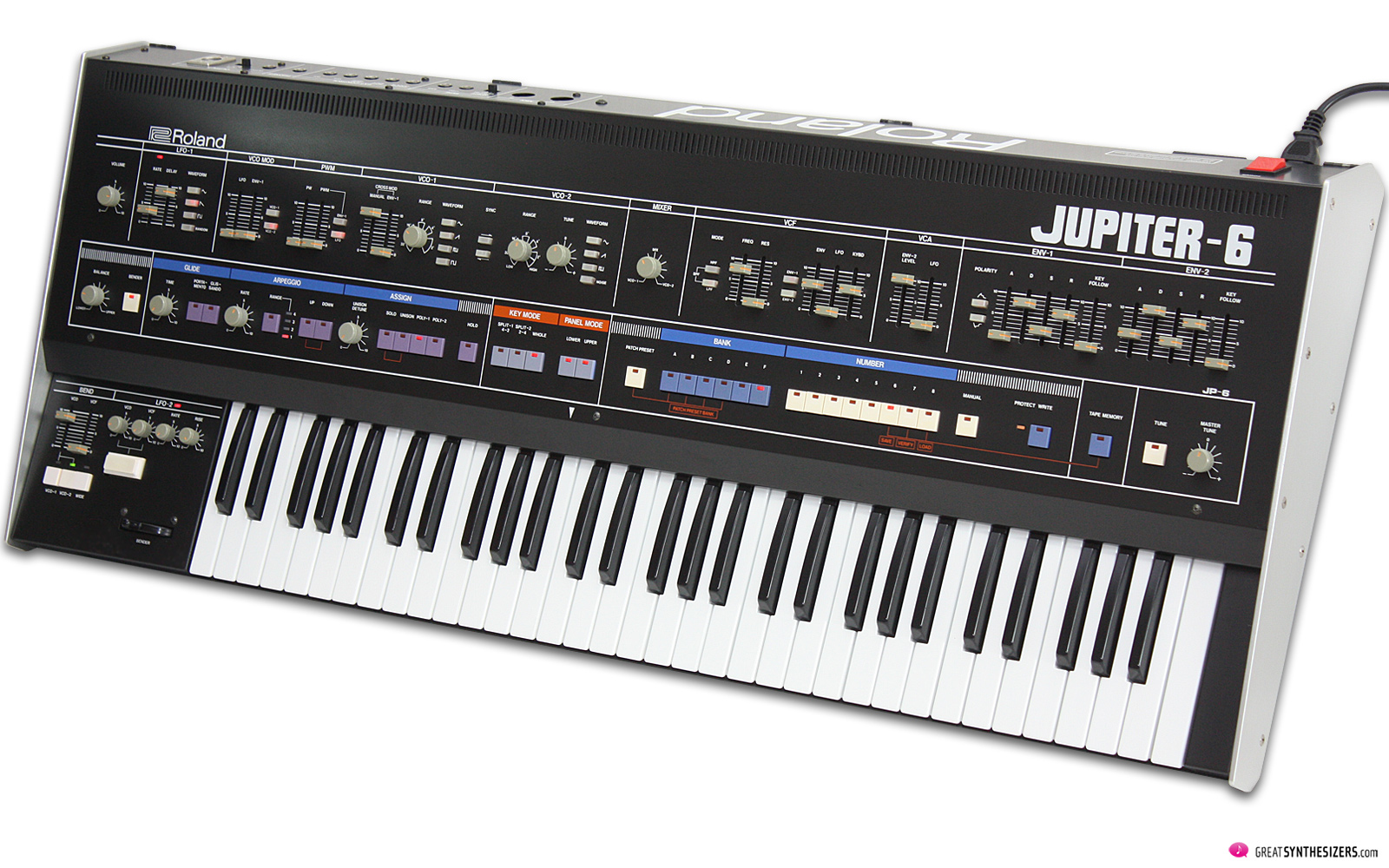
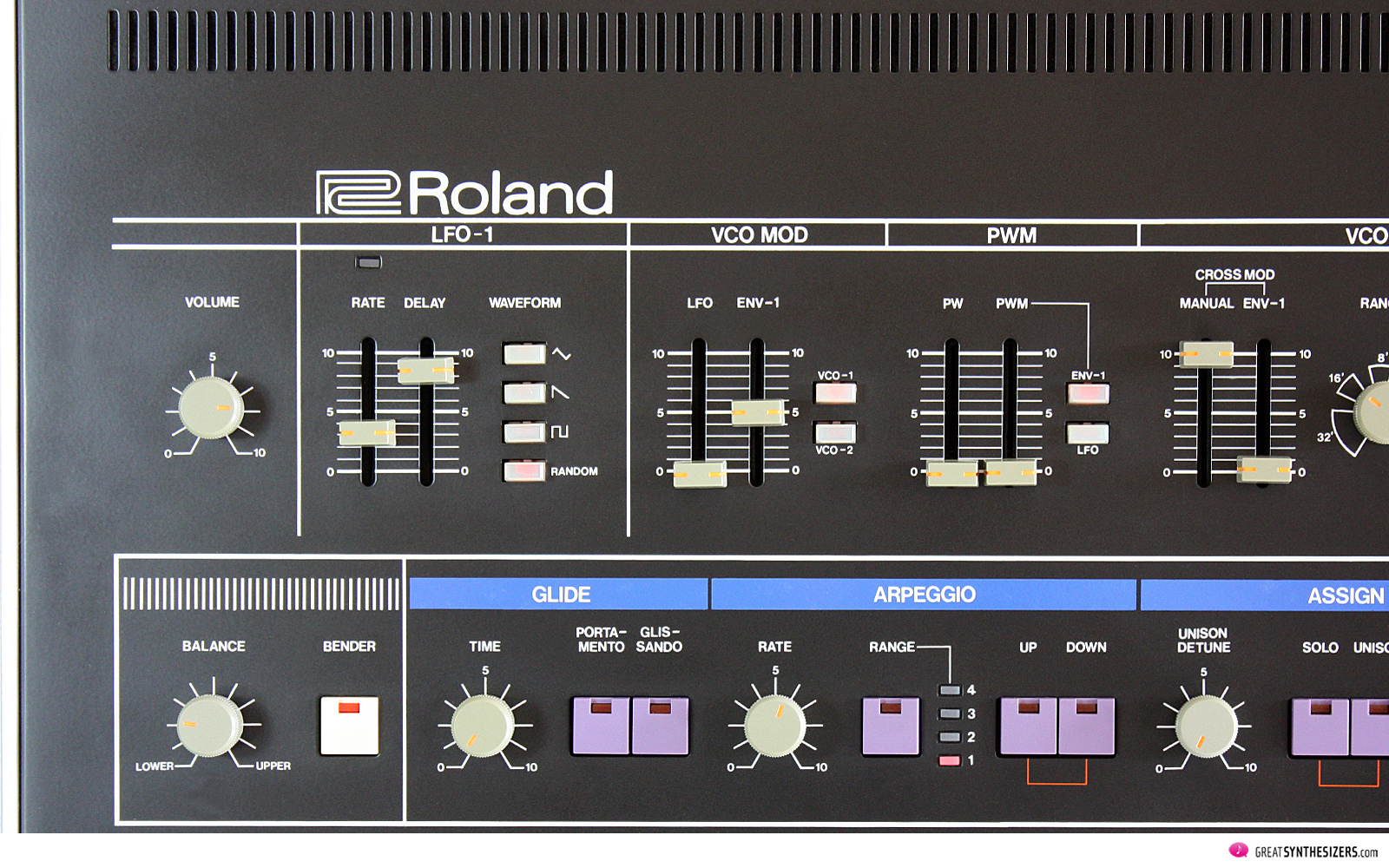

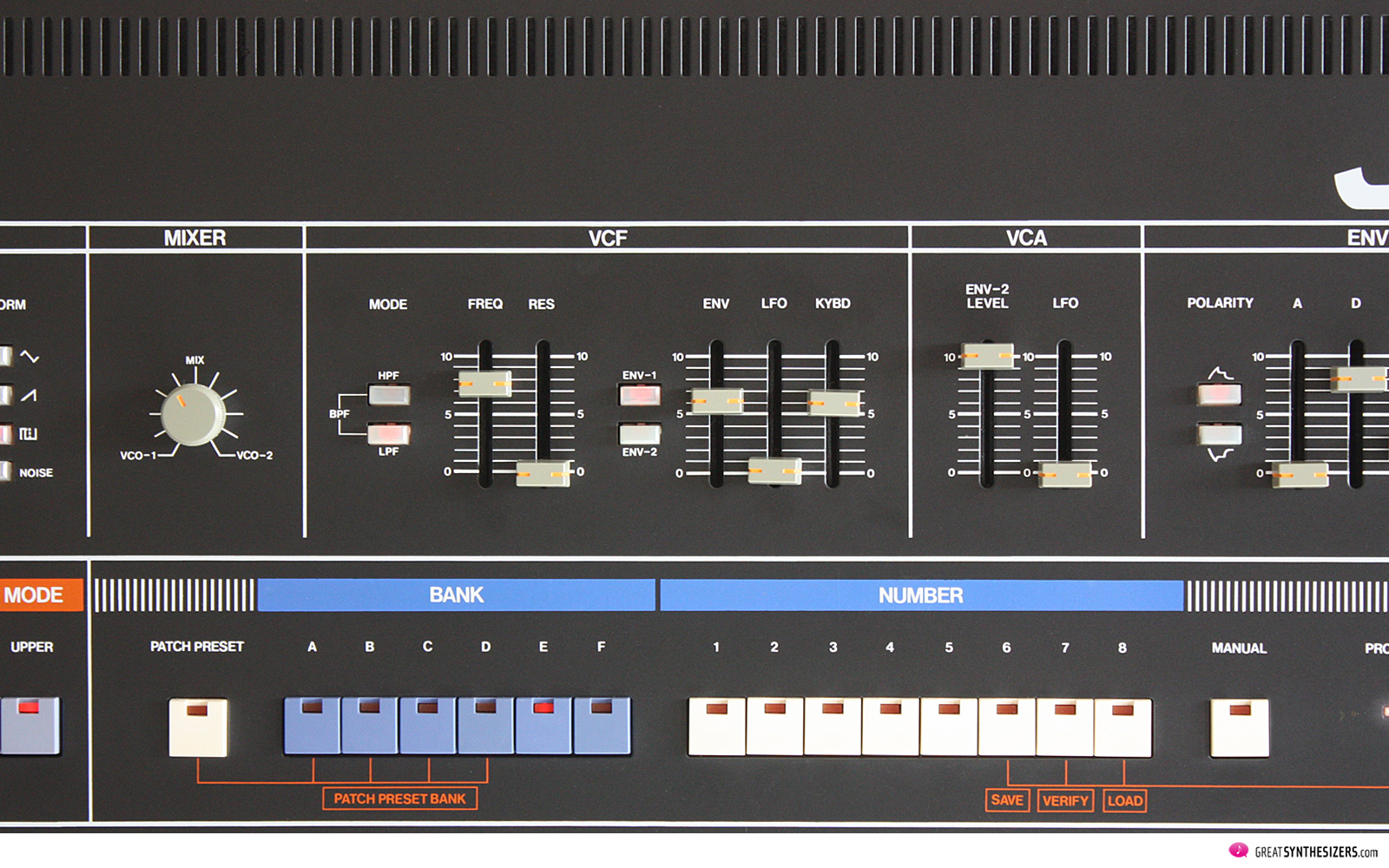

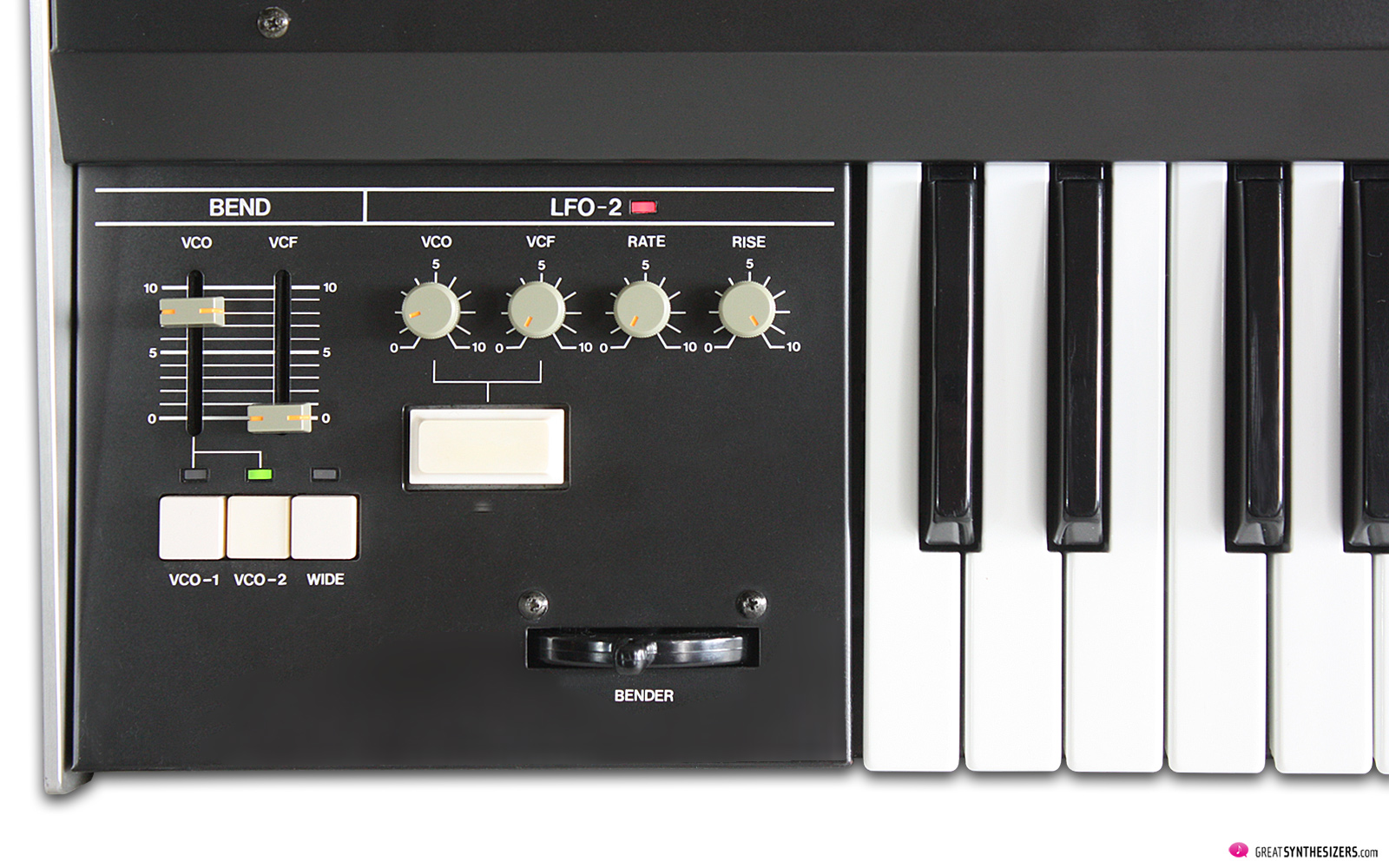
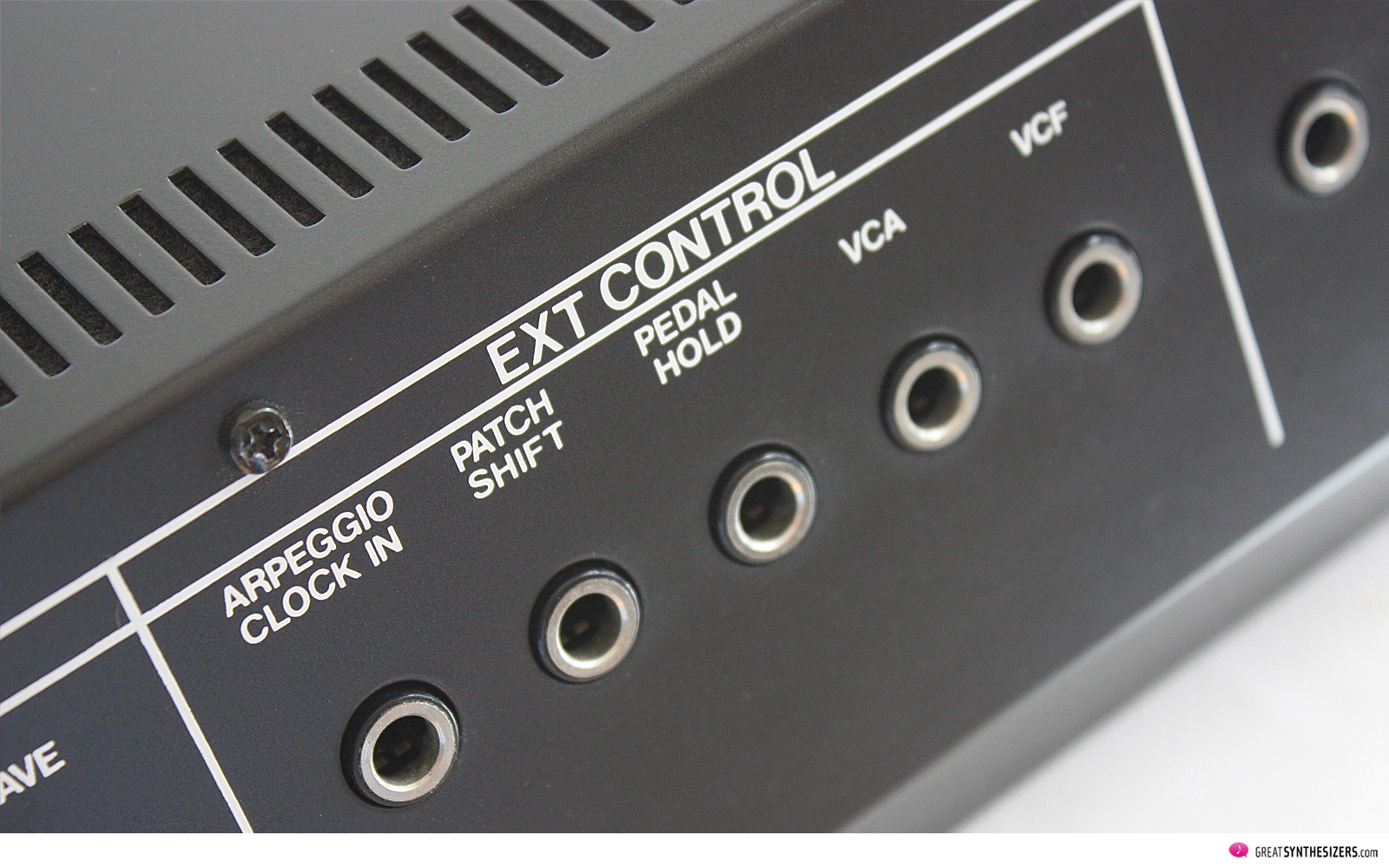
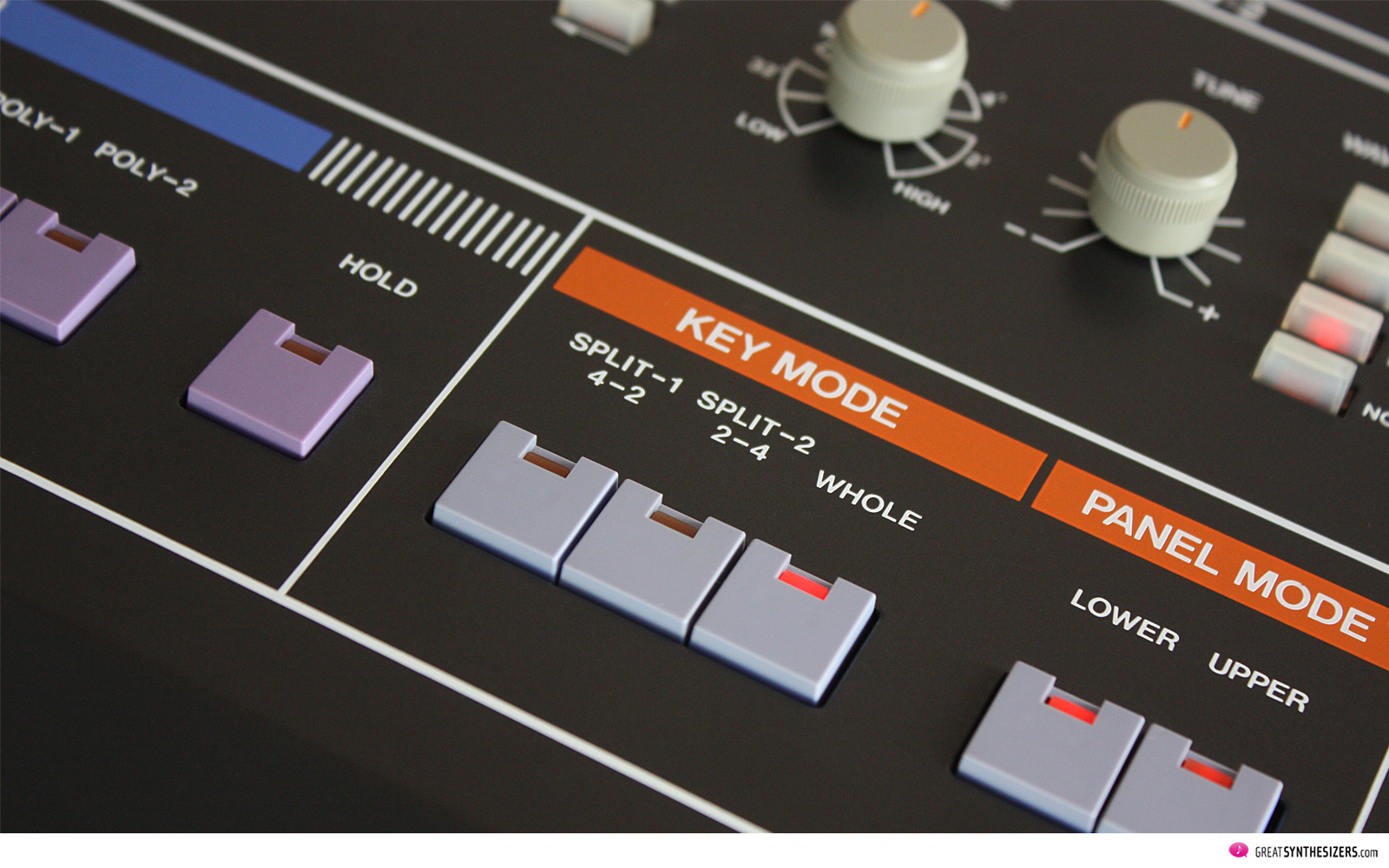


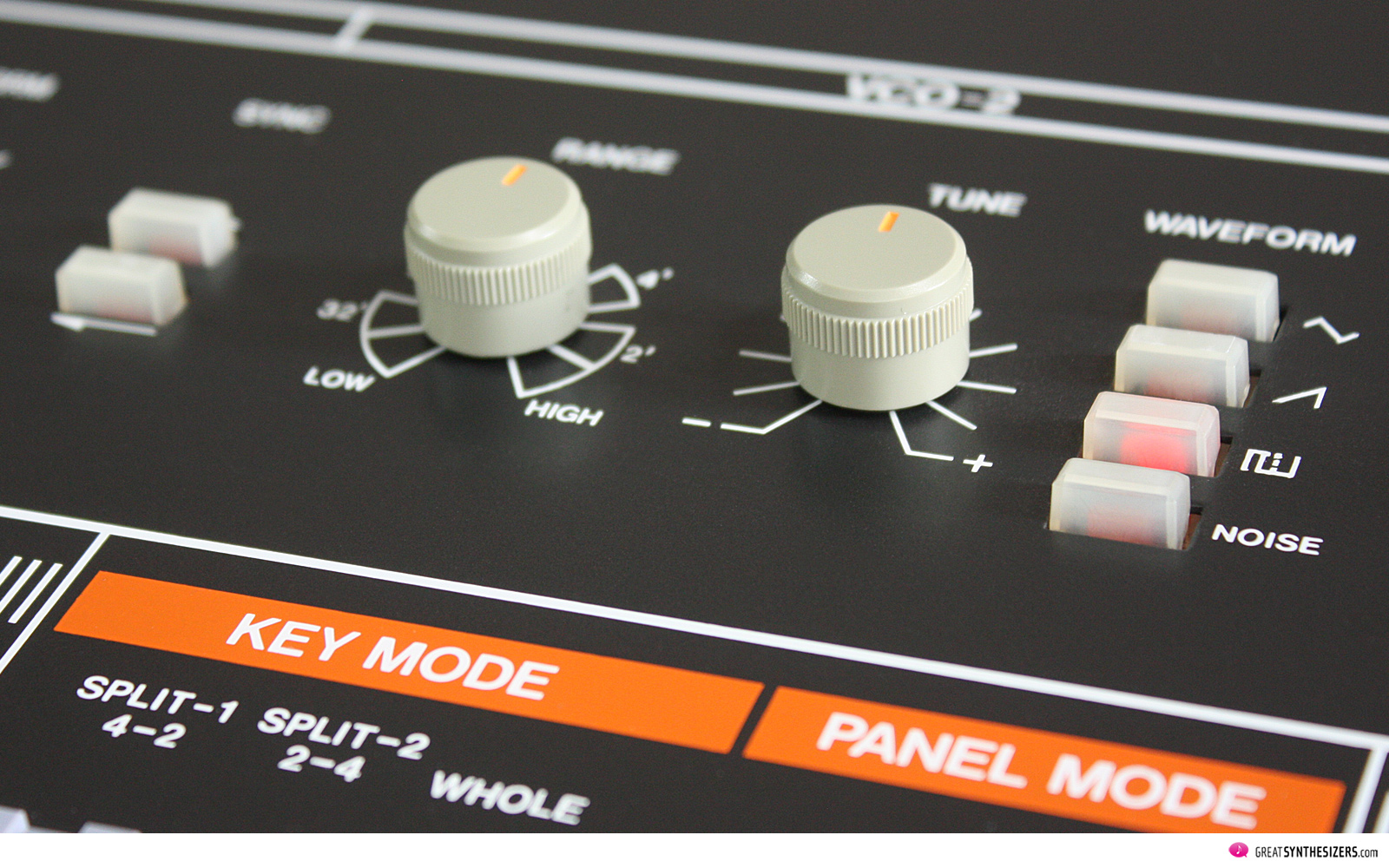
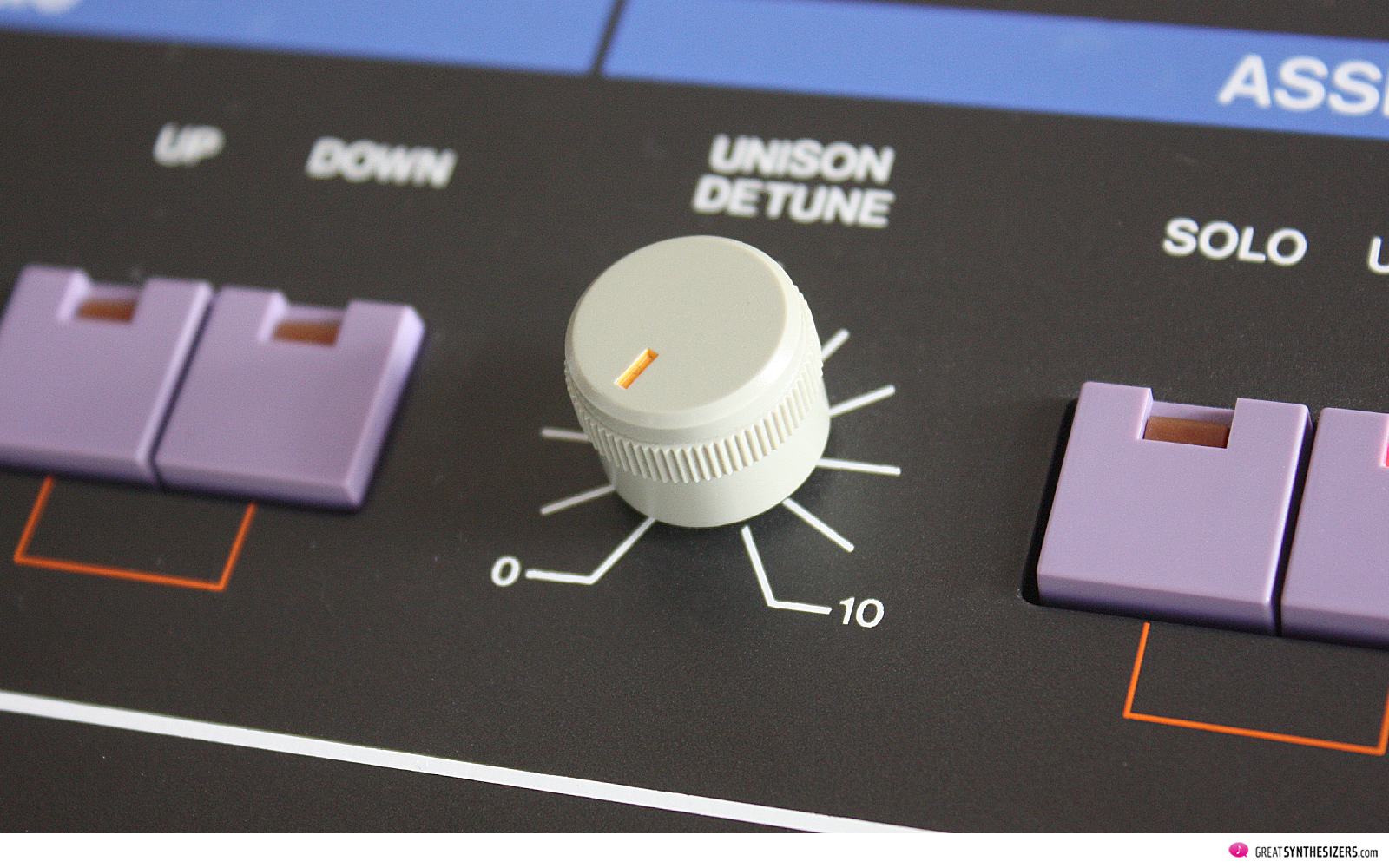
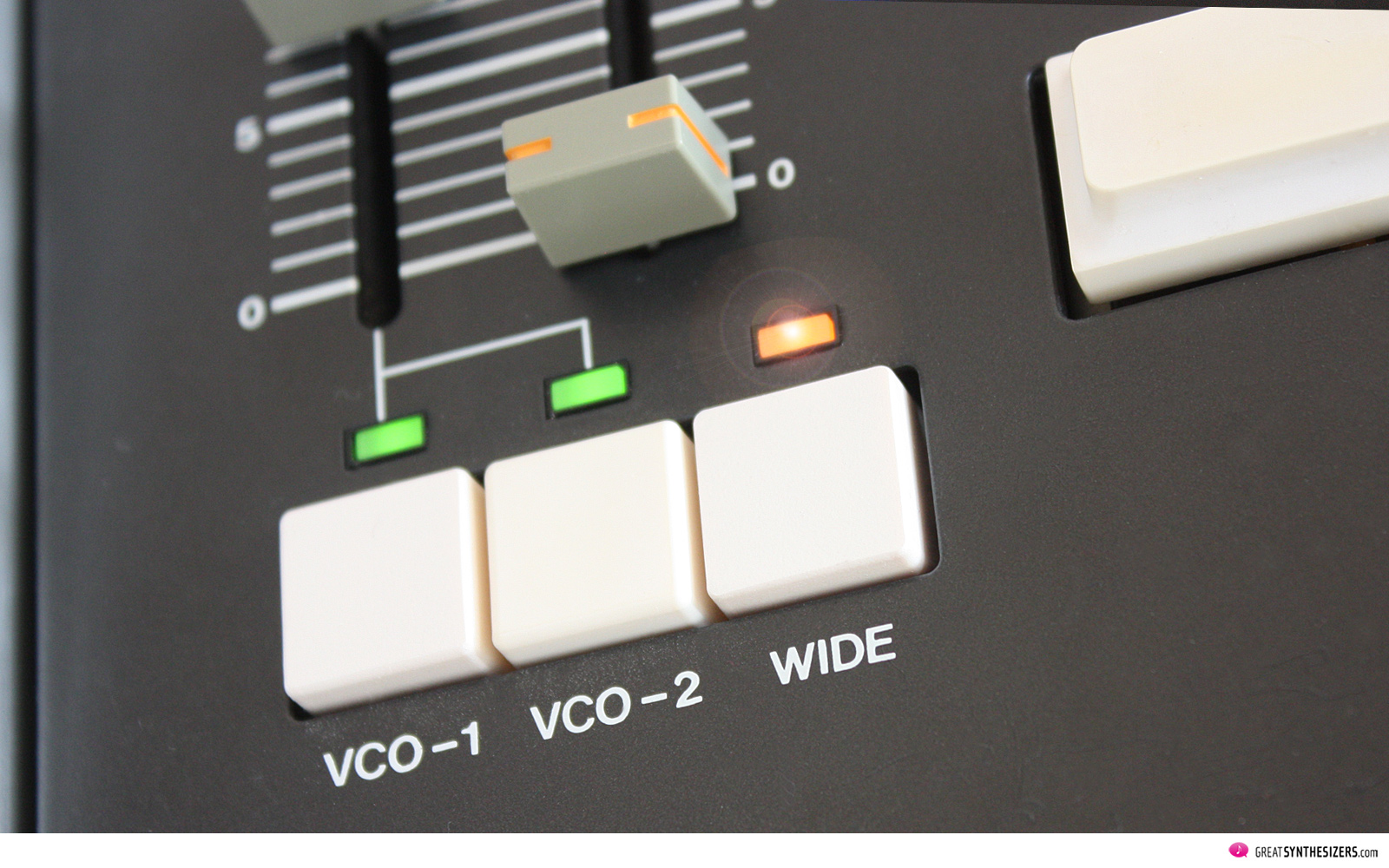
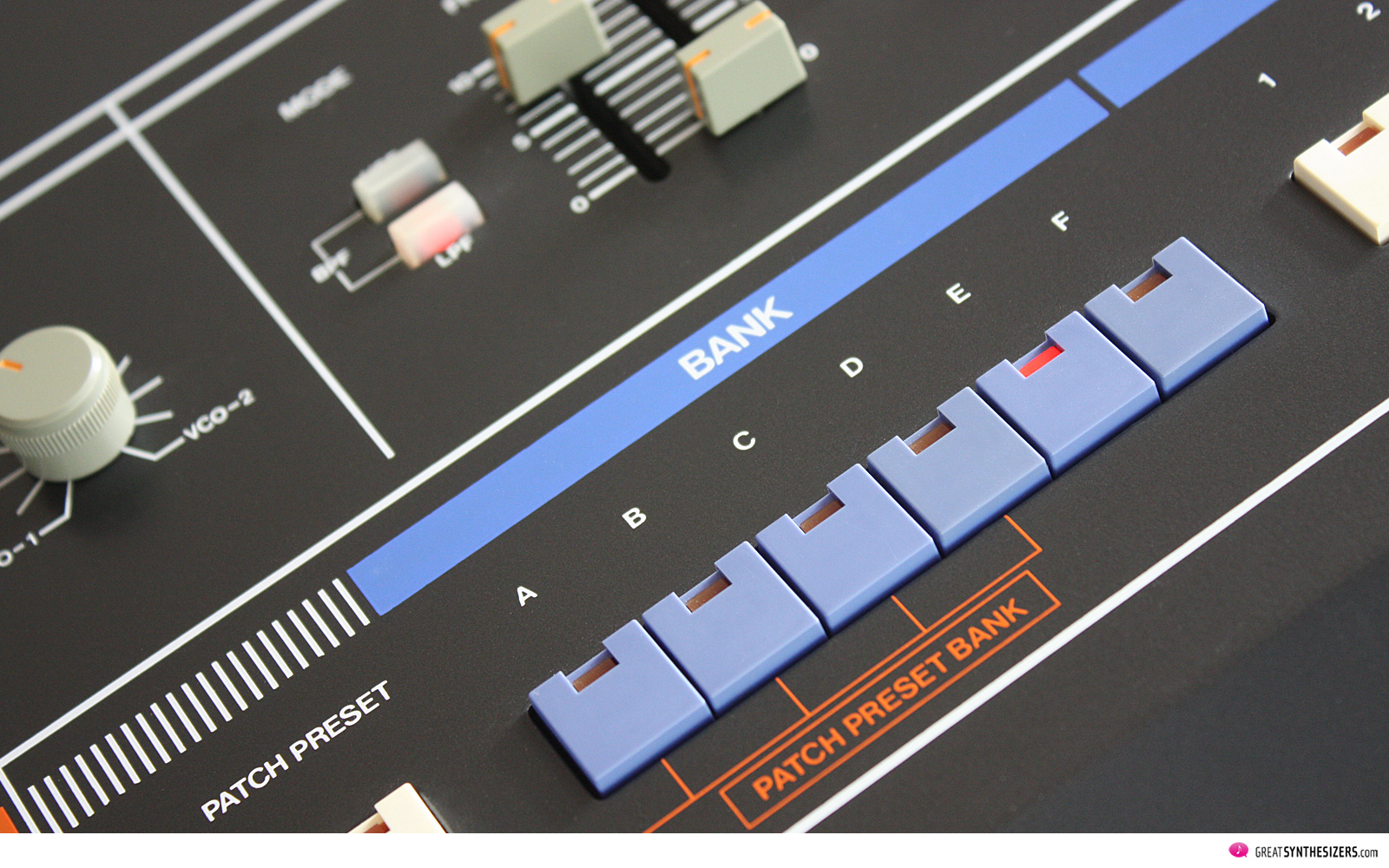



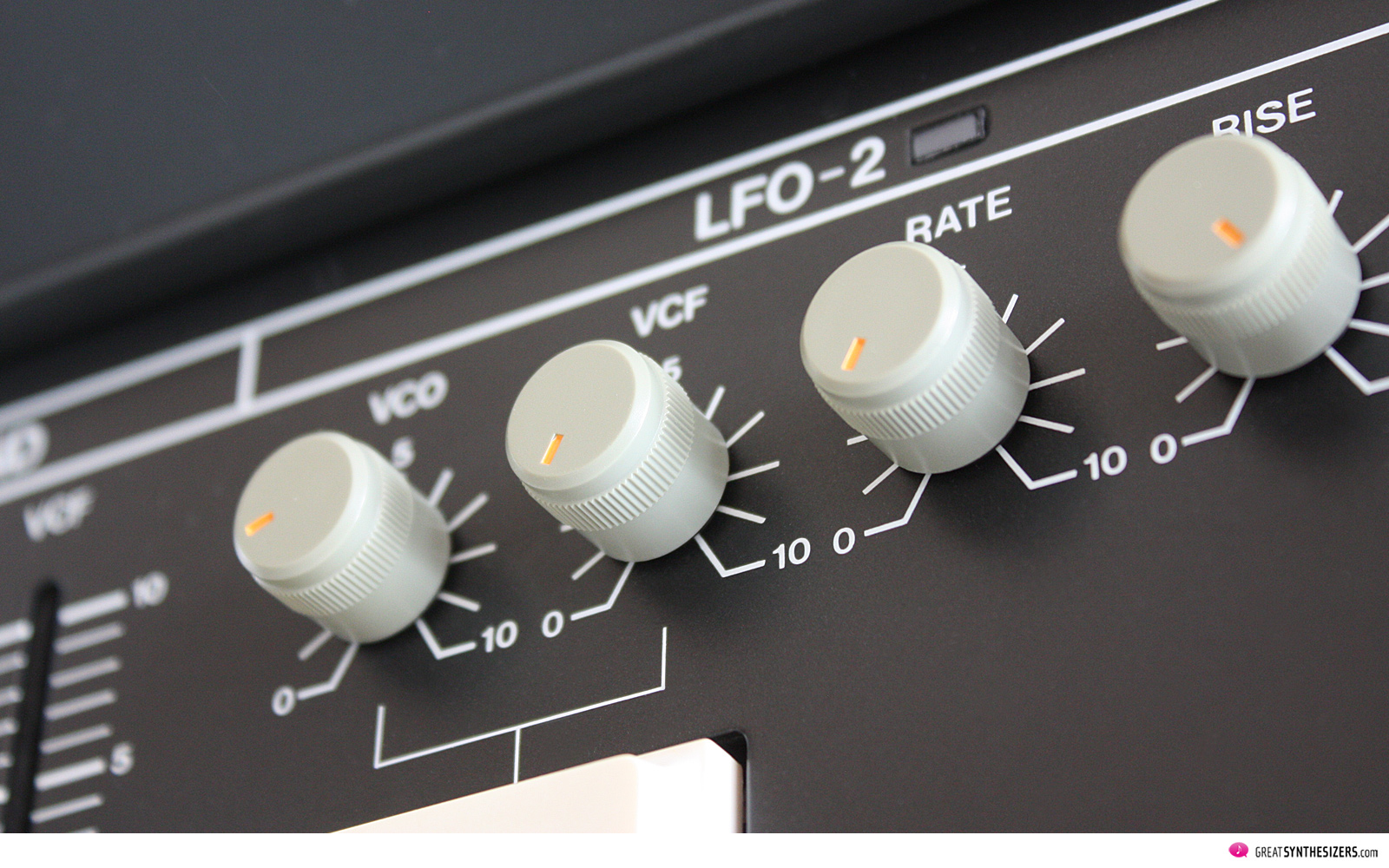

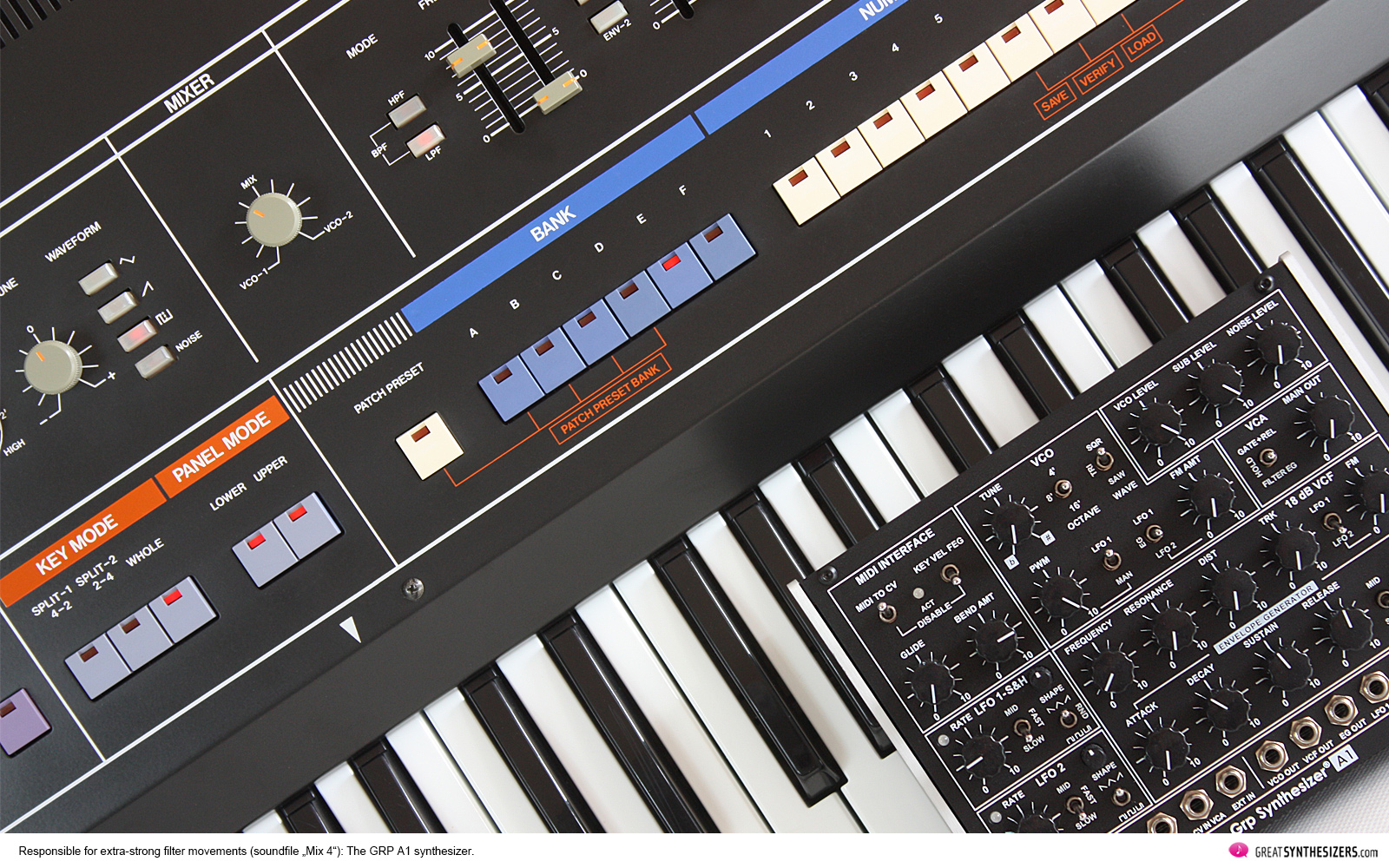
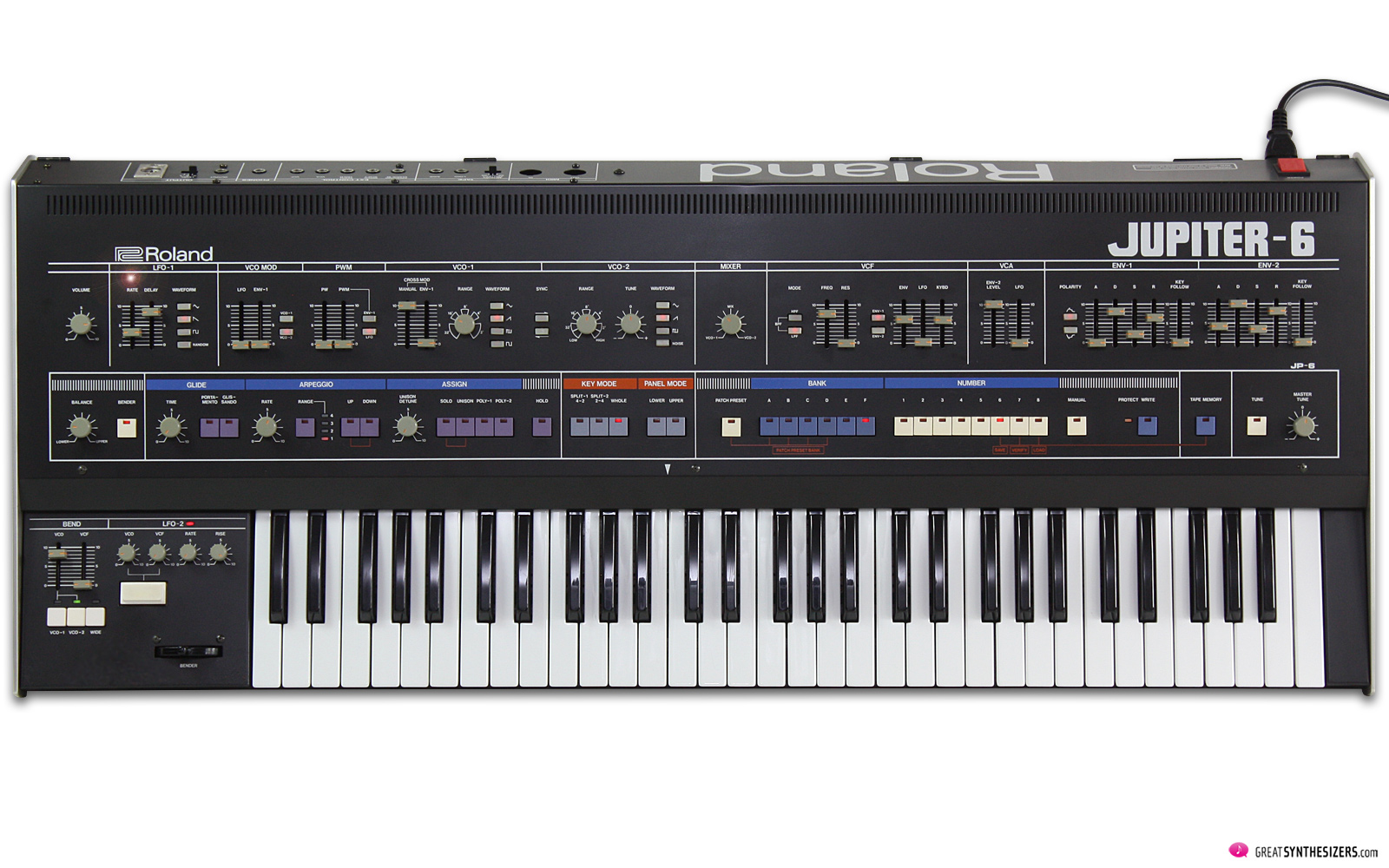
Having had the chance of playing a Jupiter-8 and owning a Jupiter-6 (later revision with MIDI thru and, which I like to call JP-6A), I can say with a lot of confidence that the Jupiter-6 does not lack any warmth whatsoever, compared to its older sibling, and even the Juno-106, revered for that matter. You strap a chorus on the output of a JP-6, which has everything it needs to emulate a Juno-106, and you can’t even tell the difference between the two, except that at high resonance levels, the signature JP-6 resonance sound shines through the chorus. It isn’t a harsh, wild, untamed resonance like you’ll most likely read online, it is a space-y, lush, well… “resonant” sound, produced as a by-product of the implementation of the state-variable filter. Basically, each half of the 4-pole filter has its own feedback loop, meaning the resonance bump is twice as “precise” (“picky” would be the more appropriate term). It is surprisingly excellent at pulling out the harmonics and nothing else, resulting in any filter play sounding like magic, harmonics going all over the place, and it’s a marvel to plug a reverb or delay to those types of sounds. The Jupiter-6, which normally stays very close to sounding like a JP-8, has a sound of its own when you bring out resonance. I’m glad this article has managed to shine the spotlight, and rightfully so, on this criminally underrated synthesizer, bearing the Jupiter name. To a lesser extent as the JP-8 was to the JP-4, the JP-6 manages to blow dust off of the Jupiter sound and extend its sonic range and capabilities beyond the previous iterations, effortlessly, in all areas, and I yearn for the day the public will be made aware of this gem. Although, the reputation of the JP-6 amongst producers is already secretly there. A lot of electro artists already have been subjected to the JP-6 and have said nothing but praises to it. Daft Punk, Dedmau5, Ray Parker Jr., Michael Jackson, all have used the JP-6 to produce world-famous songs (Contact, P.Y.T, etc.)
Back in 1985 I couldn’t justify spending three grand on the Jupiter 6 and instead got a DX7 and JX3P for similar money. To get the ‘warm’ sound of the VCOs with the DCOs I set my LFO to Random wave with no delay and speed around 87.
Then the DCO2 LFO setting was set to 01 out of a 100 for minimal modulation. This gave a more random subtle ‘VCO chorusing’ between the two oscillators. You can then use the DCO2 fine tuning to back off the detuning 1 or 2 notches if necessary.
Sometimes you can find an optimal minimal setting between 00 and 01. Just temporarily turn off the chorus, set fine tune to 00 to get the flanging sound, and carefully turn the DCO2 LFO amount setting until you hear the first stages of chorusing appear. (The much maligned ALPHA dial of the JX10 is handy for this step!) Then switch back on the chorus and restore the fine tuning amount to the previous setting.
In order to simulate the variations in tuning between all other voices like the Jupiter 6/ 8 you need the touch sensitive JXs like the 8P and JX10. Set the DCO (#31) velocity to max (#3), then use the DCO1 Env amount (#15) at minimal, 01 out of 100. Normal velocity play has no change but a harder hit will make the pitch chorusing slightly kick in. Now when you play a three note chord and (say) hit the third key slightly harder, that voice will be a bit different in pitch.
Since each voice also has a mildly different VCF setting you can use velocity to alter the Env VCF(#55) slightly so it also produces random tone variations like independent hard wired JP8 voices, as opposed to what you get with software uniformity.
This also helps wean your JX patches off the excellent chorus feature!!
(Btw the JX8P can’t split patches like the Jupiter 6 but you can use its Unison2 detune setting to add the same sound one octave below for those great Huey Lewis POWER OF LOVE brass stabs or create an expanded church organ/ multi octave string section.)